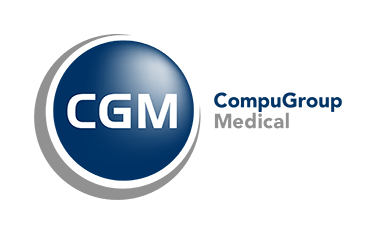How to switch your EHR
Fed up? When it's time to switch your EHR, it's important to go about it the right way.
- Identify that your practice has a software issue
- Measure the problem
- Evaluate EHR software that will solve your financial, workflow, or compliance issue
- Select the right vendor and software
- Move forward with confidence in your new EHR software
Software issues that manifest the need to switch EHRs
EHR software issues can impact your bottom line, hinder workflow, and negatively affect your regulatory compliance for programs like MACRA/MIPS.
The wrong EHR may also cause a loss of revenue by capturing inaccurate billing and coding information, failing to capture charges at all, or, if excessive amounts of time are spent charting, a reduction in patient volume with resulting drops in revenue that will quickly highlight the cost of selecting the wrong EHR.
EHRs and compliance
With news of falsified attestation data, exposure and liability for the use of non-compliant EHRs is at the forefront. Physicians are concerned and must be vigilant with the compliance and certification of their EHR software. Vendor compliance with certifying and regulatory bodies has never been more important.
Practices have never had as much of their Medicare reimbursement at risk. Providers have up to 12% of their Medicare reimbursement on the line as part of MACRA / MIPS (Merit-Based Incentive Payment System). Be sure to check your participation status with CMS.
EHR software issues
As more and more regulation and financial strain is placed on physician practices, it is critical that EHR software not be evaluated purely by cost. Many systems are used to "check the box" that a practice is participating in a given regulatory program, e.g. Meaningful Use and MACRA/MIPS. These types of EHR systems are often low cost or even free. As you might expect, these bargain-bin systems do not offer any real value.
How to measure the impact of EHR software
A healthcare practice is a complex operation and a variety of factors influence its success. Because EHRs handle so many processes (charting, patient accounts, billing, etc.), much of the load for staying organized and effective must be placed on the software.
To quantify the impact of an EHR, start with stats like patient flow, billing totals, and A/R balances. Whether you’re comparing pre-EHR figures to your new, paperless practice or from one EHR to another; measurements must be made in order to improve.
Switch EHR software to solve a problem
When your healthcare practice wants to switch its EHR, it's important to know what you need with regard to your practice's KPIs (key performance indicators)
Primary care offices have markedly different KPIs from surgical specialties. When shopping for a replacement EHR, verify that your replacement candidates will help with the achievement of your metrics.
Switch to the right EHR vendor
Switching EHRs is more than just a software swap. You need a vendor that can function as a trusted partner.
- Does the vendor receive 3rd party validation?
- Do current customer reviews, testimonials, and references check out?
- Does the vendor commit to ongoing education for users and practices?
- Is support staff experienced and helpful?
- Does it have experience rescuing practices from failed or non-viable EHRs?
Switch EHRs confidently
Doing the hard work of quantifying the strengths and weaknesses of your current EHR situation simplifies the process of replacing your EHR.
With those metrics in hand, ask questions like, "what can be improved?" and, "what do we like about what we're doing now?"
By approaching the process to switch your EHR from an analytical view point, your chance of a successful new implementation is greatly improved.
Electronic health records as a commodity
We often see that physicians treat EHRs as commodities when the reality is that they are not. EHR software should be selected with an eye towards optimization of clinical and business function. While price is an important factor, it is not the only thing to consider.
Physicians would do everything possible to help a chronically ill patient regain their health, but if negative lifestyle choices like smoking, fast food, and poor sleep hygiene are continuously being made, how much can any healthcare provider hope to change that patient's outcome?
In the same way as the patient ultimately needs to accept accountability for their choices, so, too, must physicians and their practices for their EHR outcomes.
Your EHR can either be something your practice has to deal with, or it can be a powerfully optimized, automation tool.
How to switch your EHR successfully
When your switch your EHR, your entire practice needs to engage the process: from physician leadership all the way down.
- Challenge existing workflows and ask questions about current procedures and outcomes; how can you build on strengths and mitigate weaknesses?
- Commit to training and ongoing education, and ensure your vendor has the resources to help
- Empower your users to be accountable in their respective roles
Switch your EHR to reduce the risk of burnout
Switching to the right EHR has more benefits than reducing practice costs, streamlining operations, and increasing reimbursement.
By switching your EHR, your physicians can reclaim their work/life balance.
More than 6,000 physicians responded to the Mayo Clinic that the "clerical burden" created by their EHR was a factor of their decline in job satisfaction. That does not have to be the case.
At CompuGroup Medical, our click-less initiative is focused on reduction of keystrokes and inefficient workflows. Users of our leading CGM APRIMA electronic health record report having more time for family dinners, taking care of their kids, and pursuing their passions.

